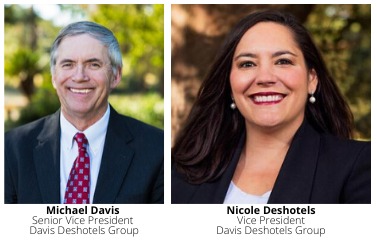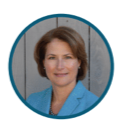
Nola Boomers: Money, 9 Steps to Life After Work
While NolaBoomers.com is under construction, our articles can be found here on our sister site, Nola Family.
IRAs and 401Ks are great, but how much money should future retirees save for uncovered healthcare expenses?
 Envision the lifestyle you want after retiring, then plan for it — is the first step that wealth management advisors Michael Davis and Nicole Deshotels of the CBD-based Davis Deshotels Group advises clients. But what does that planning actually mean?
Envision the lifestyle you want after retiring, then plan for it — is the first step that wealth management advisors Michael Davis and Nicole Deshotels of the CBD-based Davis Deshotels Group advises clients. But what does that planning actually mean?
There are plenty of resources available to help future retirees develop a financial plan, and make adjustments to that strategy as the financial picture changes. Tools available online for the do-it-yourself investor or the expertise of an advisory team can provide a framework to achieve these retirement goals. And understanding that sacrifices and changes will need to be made is one thing, but what do people nearing retirement age actually need to do before retiring? Davis and Deshotels break down nine more steps to help define retirement planning.
Implement a diversified, growth-based portfolio.
Understanding your comfort zone for risk and market volatility is essential to developing your investment plan. Risk tolerance can range from conservative to aggressive, but all portfolios should be well-diversified and positioned for growth. Adjustments must be made based on market conditions as you move closer to retirement.
Take full advantage of retirement accounts, especially catch-up contributions.
Whenever possible, increase your retirement contributions and aim to put the maximum matching contribution that your employer may offer. If you are 50 or older, you can utilize catch-up contributions. A catch-up contribution allows you to set aside more money than the usual contribution limits.
Currently, these contributions allow an individual to contribute an additional $6,000 to their 401K and an additional $1,000 to their IRAs per year. In addition, you will gain a clearer picture of your retirement plan if you simplify your investment management. One way to simplify is to consider combining IRAs of the same type with one institution.
Downsize your debt.
While it is beneficial to reduce debt, it is important to do this strategically. Most importantly, pay down high interest rate debt first, such as credit cards or consumer loans. When reducing debt, be careful when accessing qualified money that is set aside for retirement. You may incur a tax liability that outweighs the benefit of paying off the debt.
Calculate your likely retirement income.
Your retirement funds will likely come from your savings, investment and retirement accounts, social security, or other income sources. You must determine an appropriate rate of asset withdrawal based on a variety of factors, such as asset level, age, and risk tolerance. People can boost their retirement funds by working longer, reducing discretionary expenses, or deferring social security payments.
Each year you delay receiving social security, your benefits grow by approximately 8 percent until age 70. The longer you wait to withdraw funds from your retirement nest egg, the longer your savings will last.
Estimate your retirement expenses.
When you calculate your likely retirement expenses, don’t forget to include healthcare. Studies by Fidelity show that an average healthy 65-year-old male will need an additional $135,000 and the average female will need an additional $150,000 to pay for out-of-pocket healthcare expenses not covered by insurance.
Also, don’t underestimate lifestyle expenses. Make sure to include travel, helping family, hobbies, dining, and charitable giving. Finally, give yourself a cushion for the unexpected, which we suggest is 10–15 percent of your yearly expenses.
Consider future medical costs.
Studies by the U.S. Department of Health and Human Services state that someone turning 65 has a 70 percent likelihood of needing some level of assisted care in later years. Medicare does not cover the cost of long-term care.
Genworth estimates that the average assisted living facility is approximately $48,000/year, and full-time nursing care can exceed $100,000/year. In the retirement planning process, funds can be designated for this purpose or can be hedged through purchasing a multi-pay or single premium long-term care policy.
Plan where you will live.
When someone retires, there are multiple decisions that must be made. We advise our clients to retire first then decide where they want to live, unless it is a move out of necessity or is family-related. We also recommend that they research the area and try it out before they make a permanent move. There are various online sites, such as AreaVibes.com, that compare different cities based on a variety of attributes. This data will assist you in making your decision.
Trends on the market and how to react accordingly.
Many Boomers may overestimate the rate of return the portfolio will deliver given the low interest rates and the past 10 years an economically-sound market. To ensure that you plan properly, it’s critically important to overestimate the cost of living needs and use low estimates of return on assets to assess retirement capabilities.
Basically, it’s like putting a stress test on your financial future and, most importantly, the longevity of your money. Be conservative when you plan, stay on track, and constantly monitor it.
Don’t feel overwhelmed by the process.
The first step is to begin the process. Take baby steps, and accomplish one thing at a time so it is not overwhelming. Even if you started saving and investing for retirement late, or have yet to begin, you are not alone, and there are still ways you can prepare. It is never too late to get started.
 Katherine Diliberto has lived, worked, and raised a family in New Orleans. She is a retired school teacher and administrator who enjoys traveling.
Katherine Diliberto has lived, worked, and raised a family in New Orleans. She is a retired school teacher and administrator who enjoys traveling.

